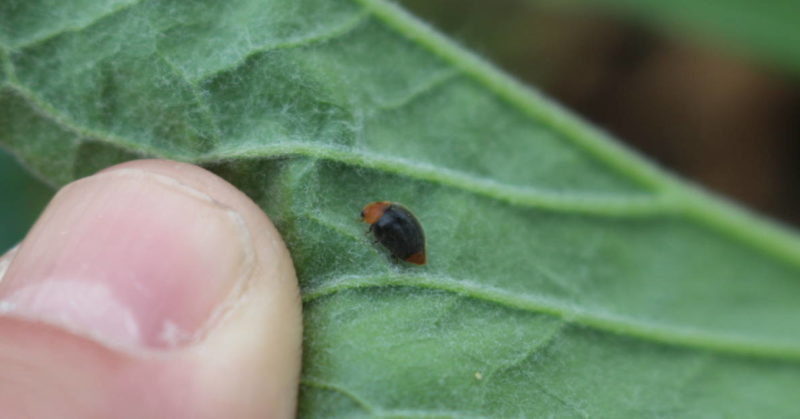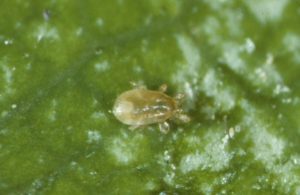
Releasing Multiple Biological Control Agents
Question: What are your thoughts about releasing more than one biological control agent to regulate an arthropod (insect and/or mite) pest population?
Answer: You ask a very good question. To properly address the question, it is important to provide some introductory information. First, there are two types of biological control agents: specialists and generalists. Specialists attack or feed on one or only a few at most different arthropod pests. Generalists tend to attack or feed on several different arthropod pests. Furthermore, generalists will feed and reproduce on alternative food sources including pollen (as will some specialists).
In general, parasitoids tend to be specialists, whereas predators tend to be generalists. An inadvertent effect of releasing different species of generalist predators in a biological control program is that the released predators may prey upon each other or another biological control agent; this is called intraguild predation.
Intraguild predation occurs when one biological control agent feeds on another biological control agent. Consequently, intraguild predation can negatively impact or disrupt biological control. There are numerous examples of intraguild predation occurring under greenhouse conditions, including the following: 1) the predatory mite, Neoseiulus californicus, will feed on another predatory mite, Phytoseiulus persimilis, when the targeted pest is absent, in this case, the two-spotted spider mite, Tetranychus urticae; 2) adults of the predatory bug, Orius majusculus, will feed on sweet potato whitefly, Bemisia tabaci, nymphs that have been parasitized by the parasitoid, Encarsia formosa. As a result, the interactions between O. majusculus and E. formosa can disrupt biological control of the sweet potato whitefly; 3) the “mealybug destroyer,” Cryptolaemus montrouzieri, will feed on citrus mealybugs, Planococcus citri, that have been parasitized by the parasitoid, Leptomastix dactylopii; and 4) the predatory mite, Amblyseius swirskii, will prey upon the larvae of the aphid predatory midge, Aphidoletes aphidomyza, and will also feed on the eggs, larvae, and nymphs of P. persmilis.
The effect of intraguild predation, based on releasing multiple biological control agents, may be associated with the formulation or how biological control agents are packaged. For instance, ‘breeder piles’ are small piles (1 to 3 grams) containing the predatory mite, Neoseiulus cucumeris, and bran mold mite, Tyrophagus putrescentiae, that are placed on the surface of the growing medium. These breeder piles should not be used in conjunction with the rove beetle, Dalotia (formally Atheta) coriaria, because rove beetle adults and larvae feed on predatory mites in the breeder piles.

It is important to note that releasing multiple biological control agents does not always result in a disruption of biological control or intraguild predation. For instance, simultaneously releasing two whitefly parasitoids; E. formosa and E. pergandiella, and a predator, Delphastus pusillus (=catalinae), did not negatively affect regulation of silverleaf whitefly, Bemisia argentifolii, populations.
Life stage may influence intraguild predation because individuals are typically more susceptible when small and/ or in certain life stages such as eggs, larvae, nymphs, and/or pupae. For example, green lacewing, Chrysoperla carnea, larvae prey upon ladybird beetle, Hippodamia convergens, larvae and immatures of the parasitoid, Aphidius smithi. Therefore, life stage, which is associated with body size, is a factor that can greatly influence intraguild predation.
Intraguild predation is an interaction that occurs when multiple biological control agents are released simultaneously with one of the biological control agent inducing mortality on another biological control agent. This can influence the success of biological control programs, although this may not always the case. Therefore, for a biological control program to succeed, it is critical to avoid releasing multiple biological control agents or determine those biological control agents that can be used together to regulate arthropod pest populations without resulting in reduced arthropod mortality caused by intraguild predation.


 Video Library
Video Library 




















